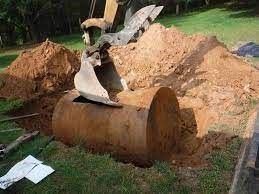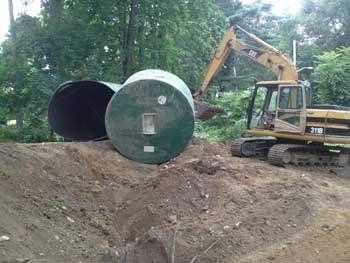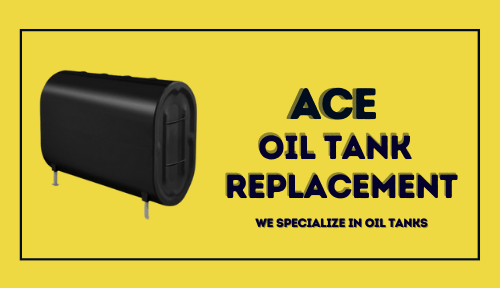Remove Oil Tank Cost - What You Need to Know - Oil Tank Removal
Interested in the oil tank cost? Prices can vary depending on factors like size and material, typically ranging from $1,000 to $2,500 for installation.
Wondering about the oil tank cost? Research different options and get quotes from local suppliers to ensure you find the best deal for your needs.
Owning a home with an oil tank can be a significant responsibility, and when the time comes to remove it, the associated costs can be a major concern. Whether you have an underground storage tank or an above-ground oil tank, understanding the factors that influence the remove oil tank cost is crucial to planning and budgeting for this necessary task. This comprehensive guide will dive into the various aspects that contribute to the overall expense, from tank size and location to soil remediation and environmental considerations.
Removing an oil tank is not a one-size-fits-all process, and the costs can vary greatly depending on your specific situation. By the end of this article, you'll have a clear understanding of what to expect when it comes to the remove oil tank cost for your home or property, empowering you to make informed decisions and plan for a smooth and responsible removal process.
Key Takeaways
- The cost of removing an oil tank can vary significantly based on factors like tank size, location, accessibility, and potential soil contamination.
- Proper permitting and regulatory compliance are essential for both above-ground and underground oil tank removal.
- Hiring a professional oil tank removal company is often the safest and most cost-effective option, though DIY removal may be possible in some cases.
- Environmental concerns, such as soil remediation and proper disposal, can significantly impact the overall remove oil tank cost.
- Transitioning to a new heating system, such as natural gas or propane, may be necessary after removing an oil tank, adding additional costs to consider.
Understanding the Factors Affecting Oil Tank Removal Costs
When it comes to the cost of removing an oil tank, a variety of factors can significantly impact the final price tag. From the size and location of the tank to the accessibility of the site and the potential for soil contamination, each element plays a crucial role in determining the overall expense. Understanding these key factors can help you better prepare and budget for the oil tank removal process.
Tank Size and Location
The size of the oil tank is a primary consideration when estimating the cost of removal. Larger underground storage tanks (USTs) or above-ground storage tanks (ASTs) generally require more labor and equipment, translating to higher removal costs. Additionally, the tank's location can also impact the price, as tanks situated in hard-to-reach areas or beneath structures may necessitate specialized equipment and additional manpower to safely extract them.
Accessibility and Site Conditions
The accessibility of the oil tank's location is another significant factor. Tanks buried deep underground or situated in tight spaces with limited access can significantly increase the complexity and cost of the removal process. Furthermore, the overall site conditions, such as the terrain, landscaping, or presence of obstacles, can also influence the ease and expense of the tank's extraction.
Soil Contamination and Remediation
One of the most crucial factors in determining the cost of oil tank removal is the potential for soil contamination. If the tank has been leaking or there is evidence of environmental damage, the necessary soil remediation and cleanup efforts can significantly add to the overall expense. Proper disposal of contaminated soil, as well as any necessary groundwater treatment or site restoration, can dramatically increase the remove oil tank cost.
Residential Oil Tank Removal: A Comprehensive Guide
When it comes to removing an oil tank, whether it's an above-ground or underground storage tank, it's crucial to understand the process and adhere to local regulations. This section will provide a comprehensive guide on residential oil tank removal, covering the key differences between above-ground and underground tank removal, as well as the necessary permitting and regulatory requirements.
Above-Ground vs. Underground Storage Tank Removal
The removal process for above-ground and underground residential oil tanks can vary significantly. Above-ground oil tanks are generally more accessible and easier to remove, as they don't require extensive excavation work. In contrast, underground storage tanks (USTs) require careful planning and execution, as they are buried and may pose a greater risk of soil contamination.
Removing an underground storage tank typically involves excavating the tank, disposing of any remaining fuel or oil, and properly decontaminating the surrounding soil. This process can be more complex and costly than above-ground tank removal, especially if there are signs of soil or groundwater contamination.
Permitting and Regulatory Requirements
Before initiating the oil tank removal process, it's essential to familiarize yourself with the local permitting and regulatory requirements. Many states and municipalities have specific laws and regulations governing the decommissioning and disposal of residential oil tanks, including obtaining the necessary permits and ensuring proper handling and disposal of the tank and associated materials.
Failure to comply with these regulations can result in fines, legal issues, and environmental liabilities. It's recommended to work with a reputable and licensed oil tank removal company that is well-versed in the local permitting process to ensure a seamless and compliant removal operation.
By understanding the differences between above-ground and underground tank removal, as well as the regulatory requirements, you can make informed decisions and navigate the residential oil tank removal process with confidence, minimizing potential risks and ensuring a safe, efficient, and environmentally responsible outcome.
Remove Oil Tank Cost: Exploring Various Options
When it comes to removing an oil tank, you have two main options: hiring a professional oil tank removal company or attempting a DIY oil tank removal. This section will explore the pros and cons of each option, helping you determine the best course of action for your specific situation and budget.
Hire a Professional Oil Tank Removal Company
Hiring a professional residential oil tank removal company is often the safest and most reliable option when it comes to remove oil tank cost. These experienced contractors have the necessary equipment, expertise, and knowledge to handle the entire process, from tank extraction to proper disposal and soil remediation, if required. While this route may come with a higher price tag, it ensures the job is done safely and in compliance with all local regulations, reducing the risk of costly mistakes or environmental issues.
The cost of hiring a professional oil tank removal service can vary widely depending on factors such as the tank's size, location, and accessibility, as well as the extent of any soil contamination or remediation needed. On average, you can expect to pay between $1,500 and $5,000 for a complete residential oil tank removal project when working with a professional contractor.
DIY Oil Tank Removal: Is It Worth the Risk?
For homeowners looking to save money, DIY oil tank removal may seem like an attractive option. However, this approach comes with significant risks and potential pitfalls that should be carefully considered. Improper handling of the tank, inadequate soil testing, or improper disposal can lead to serious environmental and health hazards, not to mention costly fines and legal issues.
While a DIY oil tank removal may cost less upfront, it's crucial to weigh the potential risks against the potential savings. If you do choose to tackle the project yourself, be sure to research local regulations, obtain necessary permits, and follow all safety protocols to minimize the chances of costly mistakes. Additionally, the heating system conversion costs associated with transitioning to a new heating source should be factored into your overall budget.
| Hiring a Professional | DIY Oil Tank Removal |
|---|---|
| Experienced contractors with the necessary equipment and expertise | Potential for mistakes and environmental issues |
| Ensures compliance with local regulations | Requires research and adherence to safety protocols |
| Costs between $1,500 and $5,000 on average | May be less expensive upfront, but with higher risks |
| Handles the entire process, including disposal and soil remediation | Homeowner is responsible for the entire process |
Environmental Concerns and Oil Tank Decommissioning
Removing an underground or above-ground oil tank can pose significant environmental risks, including potential soil contamination and health hazards. As you embark on the oil tank removal process, it's crucial to understand these environmental concerns and take the necessary precautions to ensure a safe and responsible decommissioning.
Potential Hazards and Health Risks
Oil tanks, particularly those that have been in use for an extended period, can develop leaks or corrosion, leading to the release of oil and other hazardous substances into the surrounding soil and groundwater. This oil tank soil remediation can expose individuals to a range of health risks, including respiratory issues, skin irritation, and potential long-term effects from exposure to toxic chemicals.
Furthermore, the fuel storage tank excavation process itself can unearth and release these contaminants, making it essential to follow proper safety protocols and work with experienced professionals to mitigate the risks. Failure to address property oil tank decontamination can result in significant environmental oil cleanup costs and potential legal complications.
Proper Disposal and Recycling Methods
Responsible oil tank decommissioning involves the proper disposal and recycling of the tank and any associated materials. This includes adhering to local regulations and guidelines for the handling, transportation, and disposal of the tank, as well as any contaminated soil or other hazardous waste.
By working with reputable oil tank soil remediation and environmental oil cleanup specialists, you can ensure that the entire decommissioning process is carried out in a manner that minimizes environmental impact and protects the health and safety of everyone involved.
Budgeting for Oil Tank Removal: Cost Breakdowns
When planning to remove an oil tank, it's essential to have a clear understanding of the various costs involved. The overall remove oil tank cost can be influenced by several factors, including the type of residential oil tank removal, the need for underground storage tank decommissioning, and any potential home heating oil tank abandonment or above-ground oil tank disposal requirements.
To help you budget effectively, let's break down the key cost components associated with oil tank removal:
| Cost Component | Average Range |
|---|---|
| Tank Removal | $500 - $2,000 |
| Soil Remediation | $1,000 - $20,000+ |
| Permits and Regulatory Compliance | $100 - $500 |
| Heating System Conversion Costs | $2,000 - $10,000+ |
The tank removal cost can vary widely depending on the size and location of the underground storage tank or above-ground oil tank. Accessibility and the need for specialized equipment can also impact this expense.
If oil tank soil remediation is required due to fuel storage tank excavation or property oil tank decontamination, the costs can escalate significantly. Proper environmental oil cleanup and disposal methods are crucial to mitigate any potential health risks or hazards.
Securing the necessary permits and ensuring regulatory compliance can also add to the overall remove oil tank cost. These fees may include local or state-level requirements for underground storage tank decommissioning or home heating oil tank abandonment.
Finally, if you're transitioning to a new heating system, the heating system conversion costs can be a significant factor in your budget planning. Researching the options and associated expenses for natural gas, propane, or other alternatives can help you make an informed decision that aligns with your long-term energy needs and remove oil tank cost constraints.
Home Heating System Conversion: Exploring Alternatives
After removing your old oil tank, it's time to consider converting your home's heating system to a different fuel source. Two popular options are natural gas and propane, both of which offer their own advantages and cost considerations.
Transitioning to Natural Gas or Propane
Switching to natural gas or propane can provide a more efficient and potentially more cost-effective heating solution compared to oil. Natural gas is often touted as a cleaner-burning fuel, while propane offers the flexibility of being delivered and stored on-site. Evaluating the availability and infrastructure in your local area is crucial when deciding between these two options.
Evaluating the Costs of Different Heating Options
The costs associated with heating system conversion can vary widely, depending on factors such as the size of your home, the complexity of the installation, and any necessary upgrades to your existing ductwork or piping. On average, converting from an oil-based system to natural gas or propane can range from $5,000 to $10,000 or more. It's important to research and compare quotes from qualified HVAC contractors to ensure you get the best value for your investment.
Whether you choose natural gas, propane, or explore other heating alternatives, the key is to carefully weigh the long-term costs and benefits to ensure your new heating system aligns with your home's energy needs and your budget. By considering all your options, you can make an informed decision that will provide reliable and efficient heating for years to come.
FAQ
What factors affect the cost of removing an oil tank?
The cost of removing an oil tank can vary significantly based on several key factors, including the size and location of the tank, the accessibility of the site, and the potential for soil contamination and remediation.
What are the differences between above-ground and underground oil tank removal?
The process and cost of removing an above-ground oil tank versus an underground storage tank can differ significantly. Above-ground tanks are generally easier and less expensive to remove, while underground tanks often require more extensive excavation and soil remediation.
What are the regulatory requirements for oil tank removal?
Removing an oil tank, whether it's above-ground or underground, typically requires obtaining the necessary permits and adhering to local regulations. It's important to research and comply with all relevant laws and regulations in your area to ensure a safe and compliant removal process.
Should I hire a professional oil tank removal company or attempt a DIY approach?
Hiring a professional oil tank removal company is generally the safest and most recommended option, as they have the necessary expertise, equipment, and safety protocols to handle the job properly. Attempting a DIY oil tank removal can be risky and may not meet regulatory requirements, potentially leading to additional costs and liabilities.
What are the environmental concerns associated with oil tank removal?
Removing an oil tank can pose environmental risks, including potential soil contamination and health hazards. It's crucial to follow proper disposal and recycling methods to ensure a safe and responsible removal process that minimizes the impact on the environment.
How much does it typically cost to remove an oil tank?
The cost of removing an oil tank can vary widely, ranging from $1,000 to $10,000 or more, depending on the factors mentioned earlier. It's important to obtain quotes from multiple contractors and consider all the associated costs, such as soil remediation and heating system conversion, when budgeting for oil tank removal.
What are the options for heating my home after removing an oil tank?
After removing an oil tank, you'll need to consider alternative heating options for your home, such as transitioning to natural gas or propane. The cost and feasibility of these options will depend on factors like the availability of utility services in your area and the condition of your existing heating system.
Your home heating system helps to keep the winter chill at bay during the coldest months of the year. The oil storage tank is an integral component of this system that provides your furnace with the fuel it needs to continue to produce heat for your home on demand. Choosing the right oil tank service provider ensures you receive expert care and quality products that will enable you to keep your home comfortably heated through the winter, while avoiding potentially disastrous leaks and other hazards that can affect your health and the environment. Ace Oil Tank Replacement is the leading provider of aboveground oil tank services, including installations, repair and replacement services, and removals. With extensive experience acquired through years of serving customers throughout Springfield, Massachusetts, you can entrust us to deliver the oil storage tank solutions you’re looking for. Learn about oil tank replacement services at https://www.aceoiltankreplacement.com/



